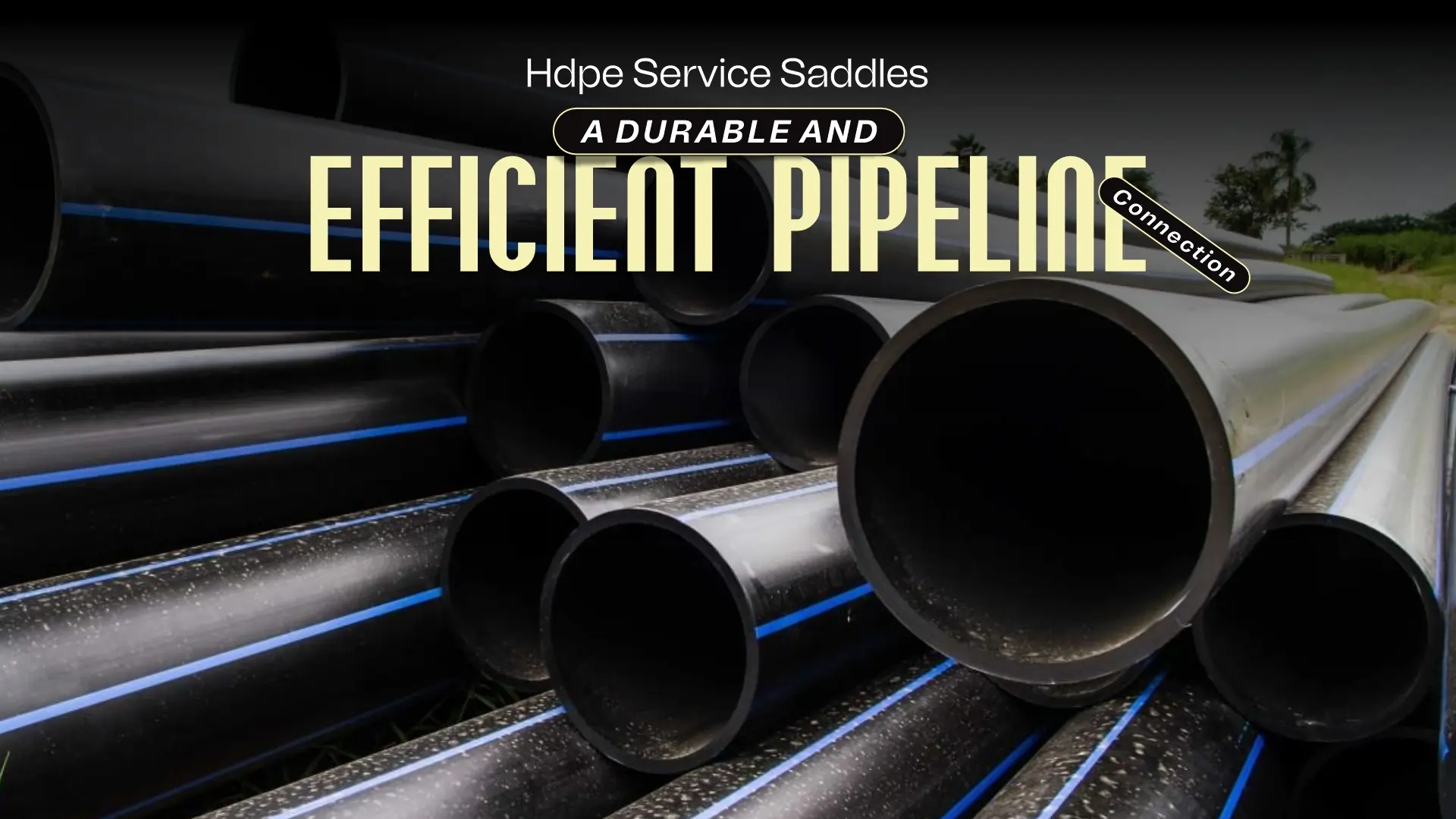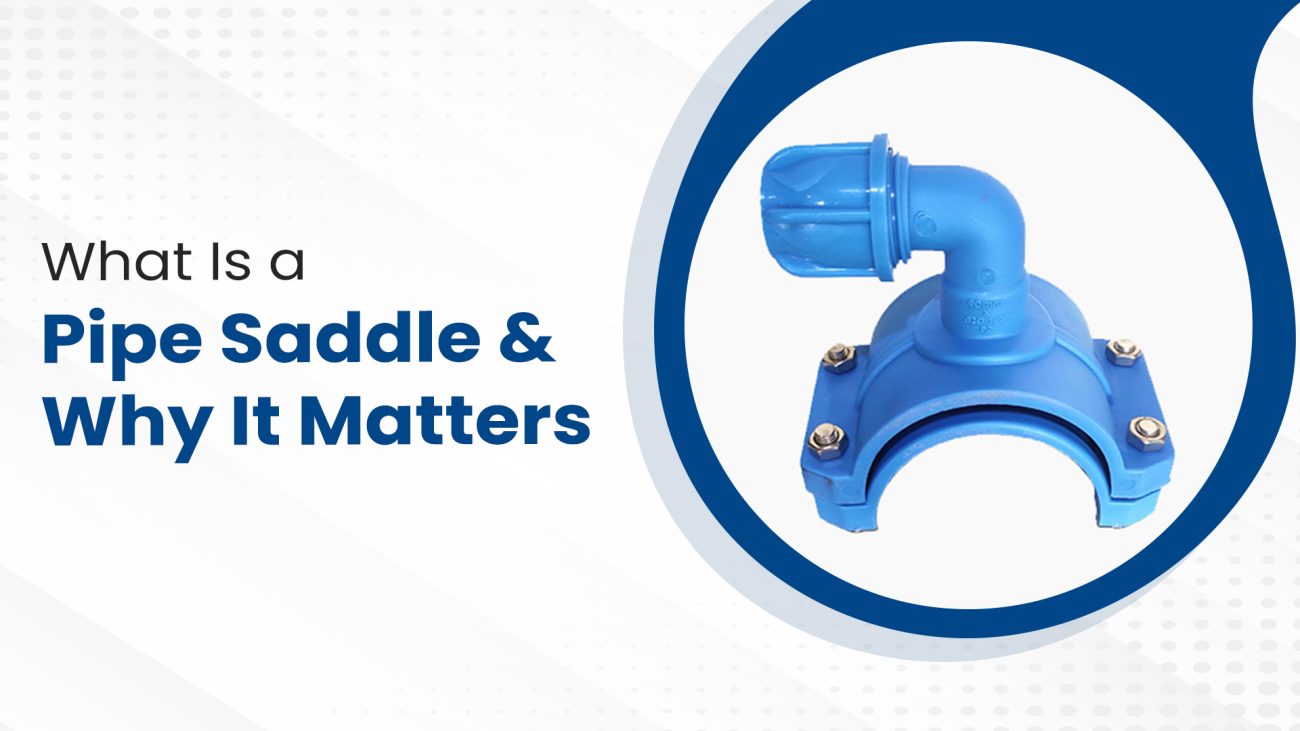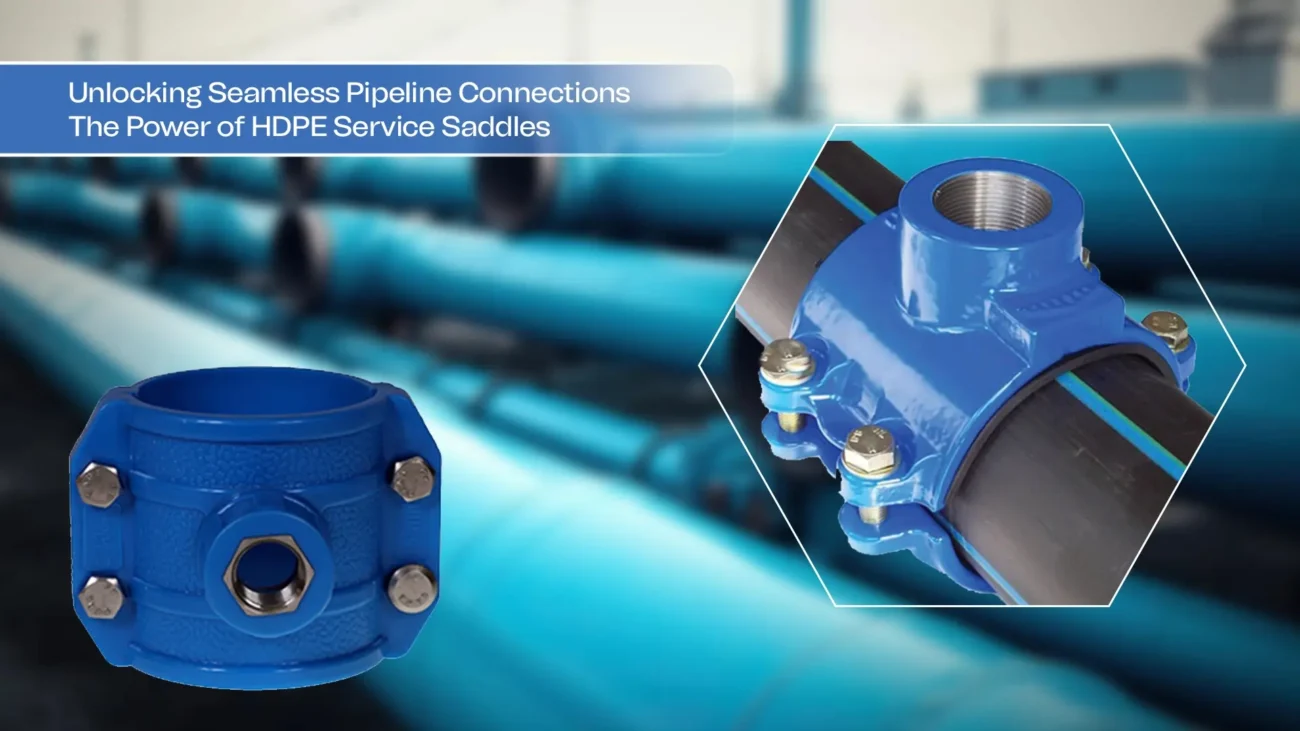Although modern water distribution systems already have service lines, HDPE (High-Density Polyethylene) service saddles create an easily customizable connection point within the system. Their construction and performance have made them popular for both residential and commercial applications.
For instance, HDPE service saddles can be utilized even in harsh environments and guarantee that the water supply provided remains constant. As they are wear-resistant and corrosion-resistant, they can be considered a durable and passive type of solution for any water related system.
When used in water distribution systems, these fittings allow for the connection of single households along with larger scale industrial plants to the municipal water supply. Their distinctive features make them an important piece within many water distribution networks.
Taking care of your water infrastructure with the help of HDPE service saddles will bring the system benefits and extend the life of those components.
What is an HDPE Service Saddle?
An HDPE service saddle, as its name suggests, can be referred to as a device that connects a service line to larger mains. It is made up of three components: an HDPE saddle body, a saddle clamp, and a saddle service line connection. And since HDPE is well known for its strength and chemical resistance, it is very suitable for water distribution systems.
Applications of HDPE Service Saddles
HDPE service saddles have a wide range of applications, including:
- Residential and Commercial Water Supply: They are widely used around the world to connect individual homes and businesses with the municipal water supply.
- Industrial Process Water Lines: HDPE Service saddles can also serve industrial pipelines intended to move process water for process operations.
- Irrigation Systems: They are also made to connect irrigation systems to mains used for agricultural and landscaping purposes, ensuring a consistent and reliable supply of water to fertilizers and plants.
- Fire Protection Systems: These saddles are also used in fire sprinkler systems where they are used to connect the mains to the sprinkler pipes. In case of any fire urges, the saddles assure a steady flow of water to the sprinklers reducing loss of properties and lives.
Benefits of HDPE Service Saddles
Unlike standard metal connectors, HDPE service saddles have benefits, which include the following:
- Durability and Long Service Life: One of the most amazing properties of HDPE is its extremely durable, corrosion resistant, chemically resistant, and mechanical resistant ability, which means that HDPE service saddles will endure wear from any motor stress and don’t need frequent repairs.
- Resistance to Corrosion and Chemicals: Most of the chemicals and any contaminants present in a water distribution network have no adverse effect on HDPE. This clearly indicates use of HDPE will be suitable in those regions where water is highly aggressive in these terms.
- Flexibility and Ease of Installation: HDPE service saddles can easily be bent into shape and fixed without complex tools or special equipment. Thus, installation time and costs are considerably lower, making them economical for both new construction and retrofit applications.
- Cost-Effective Solution: In the case of long term use, HDPE service saddles are cheap since they hardly require maintenance or replacement. Their use for plumbing purposes thus brings immense financial benefits to homeowners and commercial sites.
- Leak-Free Performance: The HDPE service saddles, when installed, make a leak-free joint between the service line and the main pipeline in place. This enhances water conservation and minimises damages to the property, ensuring water distribution is effective and invites sustainability.
Installation Process
An HDPE service saddle has the following steps when being installed:
- Preparation and Excavation: The area surrounding the main pipeline in which the service saddle has to be fitted is dug out so that the required place can be reached.
- Cutting and Preparation of the Main Pipeline: The service saddle is to be received; thus, the main pipeline requires cutting in preparation.
- Positioning and Securing the HDPE Service Saddle: The service saddle is placed on the cut end of the main pipe and is held in position by a saddle clamp.
- Connecting the Service Line: The service line is routed to the service saddle connection.
- Testing and Backfilling: Leaks are tested and the place that was dug is filled up.
Maintenance and Inspection
HDPE service saddles can be considered to be effective in the long run provided maintenance and inspection are done routinely. This is concerned with:
- Regular Inspection: One has to check if the service saddle has got any signs of wear and tear or any damages like flow leaks and even look for cracks, abrasions or loose connections.
- Cleaning and Debris Removal: Remove any debris or sediment that may accumulate around the service saddle, as this can interfere with its performance and lead to leaks.
- Repair and Replacement: If necessary, repair or replace the service saddle to maintain its integrity. This may be required in cases of severe damage or after a prolonged service life.
HDPE service saddles are a reliable and efficient solution for connecting service lines to main pipelines. Their durability, resistance to corrosion, and ease of installation make them a popular choice for water distribution systems. By understanding the benefits and applications of HDPE service saddles, you can ensure the optimal performance and longevity of your water infrastructure.





